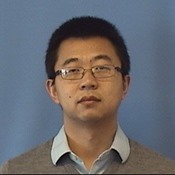Program Information
Dual-Layer Detector Spectral CT Performance: Quantitative Accuracy and Precision of Iodine Concentration Measurements
X Zhao1*, T Hameed2 , G Hutchins3 , Y Liang4 , (1) Indiana Univesity, Indianapolis, IN, (2) Indiana University Healthcare, Indianapolis, Indiana, (3) Indiana University, Indianapolis, Indiana, (4) Indiana University, Indianapolis, Indiana
Presentations
WE-DE-605-4 (Wednesday, August 2, 2017) 10:15 AM - 12:15 PM Room: 605
Purpose: Dual-layer detector technology has recently been introduced as a commercially available alternative method for spectral CT imaging. The purpose of this phantom study is to assess the accuracy and precision of iodine concentration measurements with this new technology.
Methods: Vials containing iodine solutions at different concentrations (0.18, 0.57, 0.82, 1.2, 1.4, 2.6, 4.9, and 8.9 mg/cc) were placed inside CTDI phantoms of two diameters (16cm and 32cm). The phantoms were scanned repeatedly (N=4) using the double-layer detector CT (iQon, Philips) with 120KeV, 0.75sec rotation time and 1.14 helical pitch. Multiple tube currents were used with CTDIs ranging from 50% to 200% of clinical CTDI values. Iodine concentrations were extracted using the “spectral” software available on the scanner.
Results: A linear relationship was observed between measured and expected iodine concentrations. The bias in iodine concentration values varied from -2.4 to 0.2 mg/cc, and the standard deviations varied from 0.04 to 0.46 mg/cc. The accuracy and precision estimates demonstrated improved spectral CT performance when the samples were placed inside the 16cm phantom relative to the 32cm phantom. The quantification error had no correlation with dose (CTDI), nor with the sample concentration.
Conclusion: Systematic errors (bias) in the measurement of iodine concentrations in two different sized phantoms were observed in this study with estimated errors as high as 2.4 mg/cc. The initial observations from this preliminary study suggest that care must be taken when interpreting iodine concentrations or related biological processes (such as perfusion) based upon contrast kinetics in patient studies.
Contact Email:
